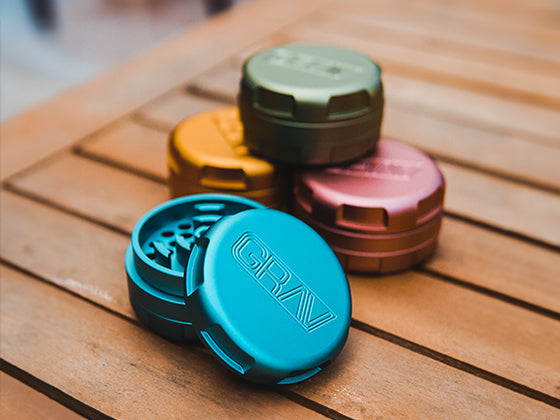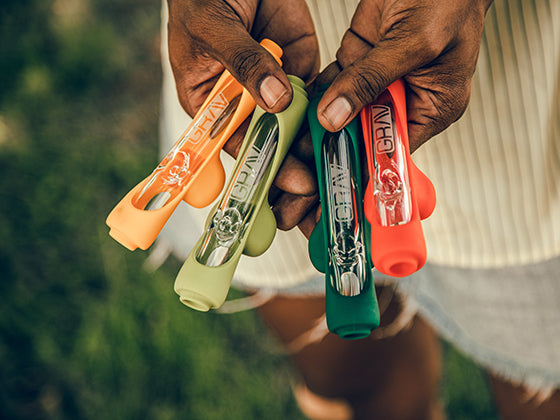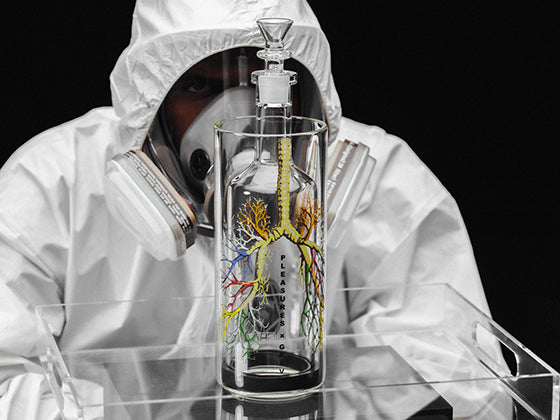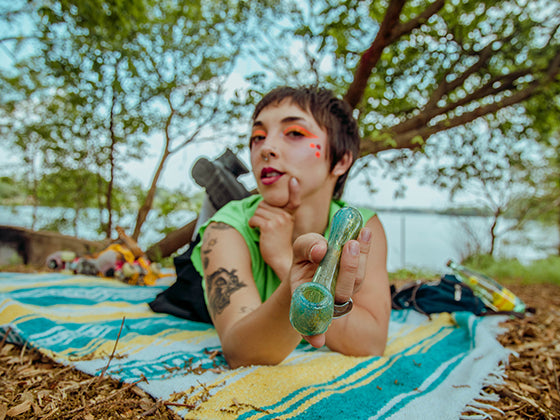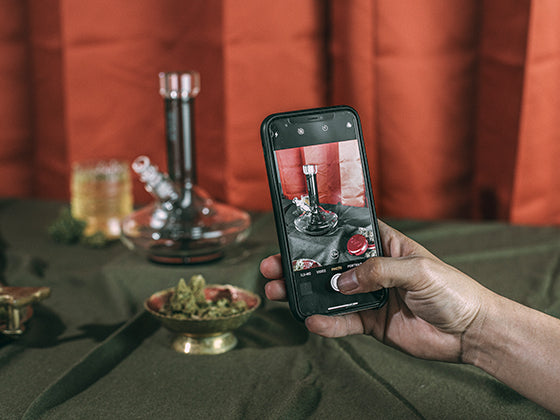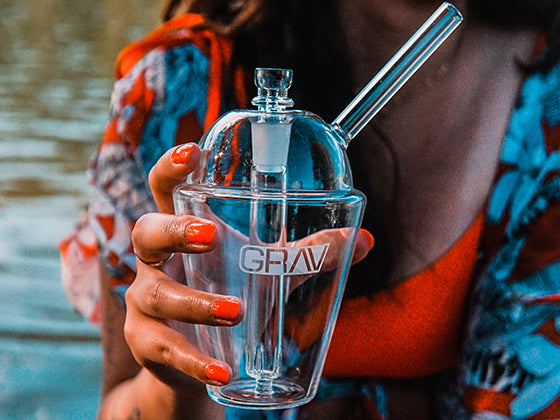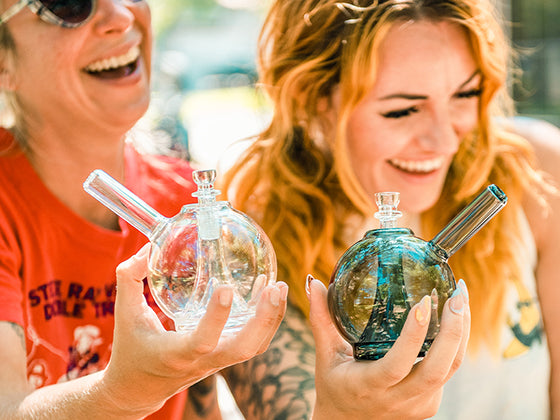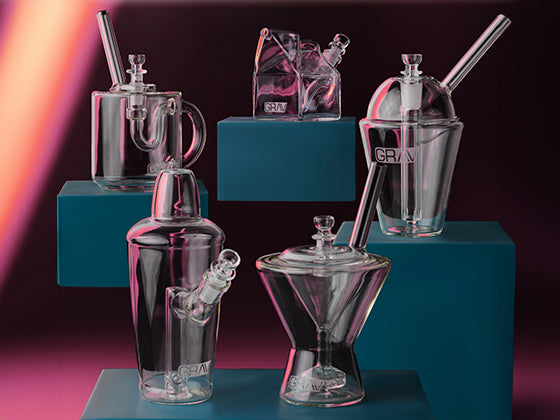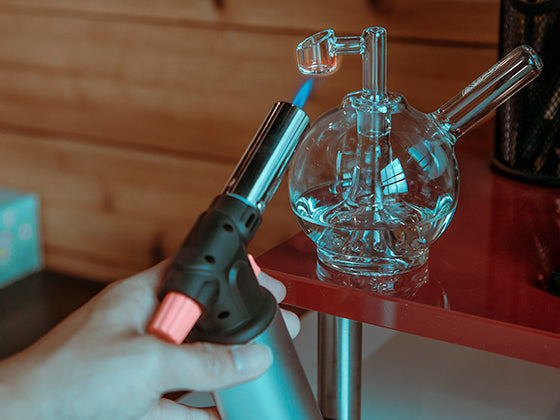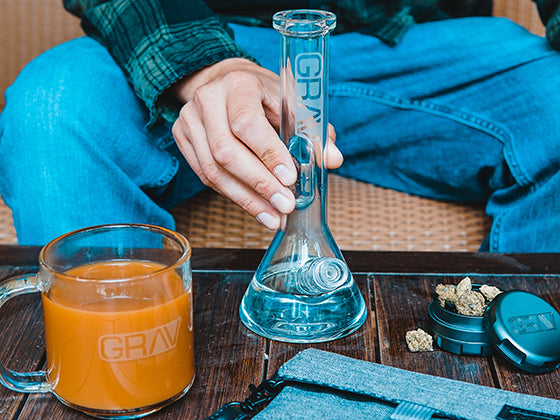THC and CBD are cannabinoids, chemical compounds found in cannabis that influence sleep, mood, appetite, memory, sensation, and pleasure. They're named cannabinoids because they were first discovered in the cannabis plant, but over time, scientists have found naturally-occurring cannabinoids in the human body. These neurotransmitters are known as endogenous cannabinoids or endocannabinoids. Like their plant-based counterparts, endocannabinoids affect a range of bodily functions. They help you destress after a fight-or-flight adrenaline response. They're part of what causes exercise euphoria like Runner's High. They're even part of what causes human embryos to implant in the uterus, and play a major role in fetal development. Cannabinoids have been part of your existence since the get!
THC is the famous cannabinoid. It's the primary chemical in cannabis that gets you "high" - the feeling of euphoria and relaxation people associate with smoking weed. However, over the last couple decades, scientists have isolated additional cannabinoids in cannabis, each with its own array of effects. Some of these cannabinoids aren't psychoactive in the same way THC is, and are non-intoxicating - meaning they don't impair users. CBD is the best-known of these non-intoxicating cannabinoids. Smoking or consuming CBD can provide pain-relief, relaxation, and help sleeping.
The cannabis plant is also known as hemp. Any time you hear "hemp" - including industrial hemp used for making paper, hemp-based plastics, etc. - you're hearing weed. Any time you hear "weed" - what people smoke and consume for medical relief and/or pleasure - you're hearing hemp. When Congress passed the 2018 Farm Bill, legalizing hemp production for the purpose of making consumables, they were making it legal to grow cannabis nationwide. But cannabis flower is still illegal in many states, so how can that be?
The Farm Bill distinguishes between cannabis that has a THC content below 0.03%. Cannabis can be bred and grown to have more or less THC and other cannabinoids, similar to how flowers can be bred to have different colored petals. Low-THC cannabis is commonly known as hemp. This is why CBD products - including CBD cannabis flower for smoking - are now legal to consume and produce in most states, even where THC-rich cannabis is still prohibited.
THC is the famous cannabinoid. It's the primary chemical in cannabis that gets you "high" - the feeling of euphoria and relaxation people associate with smoking weed. However, over the last couple decades, scientists have isolated additional cannabinoids in cannabis, each with its own array of effects. Some of these cannabinoids aren't psychoactive in the same way THC is, and are non-intoxicating - meaning they don't impair users. CBD is the best-known of these non-intoxicating cannabinoids. Smoking or consuming CBD can provide pain-relief, relaxation, and help sleeping.
The cannabis plant is also known as hemp. Any time you hear "hemp" - including industrial hemp used for making paper, hemp-based plastics, etc. - you're hearing weed. Any time you hear "weed" - what people smoke and consume for medical relief and/or pleasure - you're hearing hemp. When Congress passed the 2018 Farm Bill, legalizing hemp production for the purpose of making consumables, they were making it legal to grow cannabis nationwide. But cannabis flower is still illegal in many states, so how can that be?
The Farm Bill distinguishes between cannabis that has a THC content below 0.03%. Cannabis can be bred and grown to have more or less THC and other cannabinoids, similar to how flowers can be bred to have different colored petals. Low-THC cannabis is commonly known as hemp. This is why CBD products - including CBD cannabis flower for smoking - are now legal to consume and produce in most states, even where THC-rich cannabis is still prohibited.


